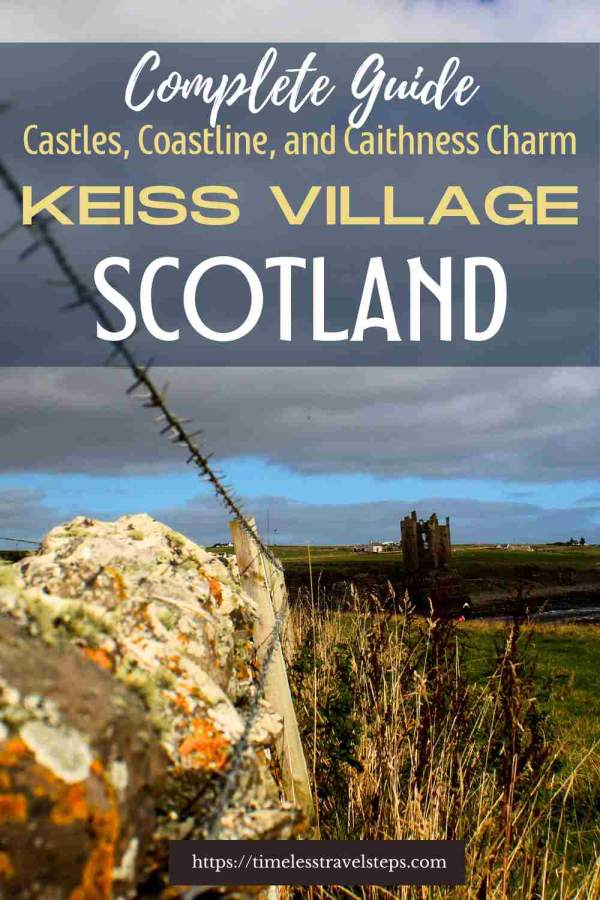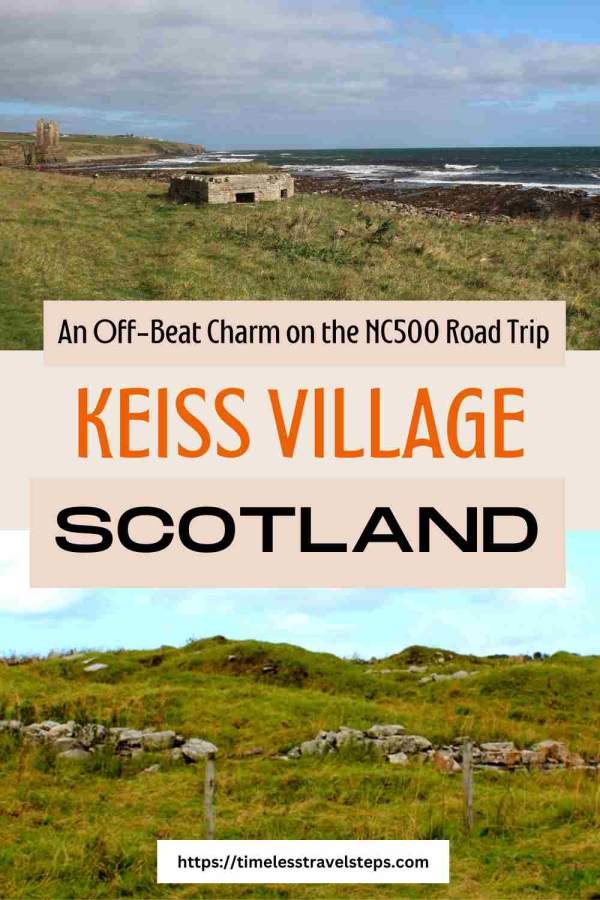Keiss Village: Castles, Coastline, and Caithness Charm
19 min readKeiss Village, with its understated charm, remains one of the Scottish Highlands' best-kept secrets, offering an escape into a world less travelled. Not much has been widely written about this hidden gem, which fueled my curiosity and led me to explore its depths. If you, like me, are drawn to the enchantment of the lesser-known and the captivating, Keiss Village is a treasure trove waiting to be discovered.
The post Keiss Village: Castles, Coastline, and Caithness Charm appeared first on Timeless Travel Steps.
Discover the enchanting Keiss Village, a hidden jewel nestled in the North of Scotland. This quaint village, situated in the picturesque county of Caithness, overlooks the serene Sinclair Bay, presenting a tapestry of historical and natural wonders.
Keiss Village, with its understated charm, remains one of the Scottish Highlands’ best-kept secrets, offering an escape into a world less travelled. Not much has been widely written about this hidden gem, which fueled my curiosity and led me to explore its depths. If you, like me, are drawn to the enchantment of the lesser-known and the captivating, Keiss Village is a treasure trove waiting to be discovered.
In this blog post, I invite you to uncover the village’s obscure origins, its rich and storied past, and the spellbinding beauty that crowns Keiss as a must-visit destination.
In the following sections, I share what I have learnt from my research; a journey through time, exploring the village’s roots from ancient Norse influences to its evolution into a quintessential Scottish community. Read on to uncover the mysteries of Keiss and its hidden history and beauty.
Timeless Travel Steps is supported by our readers. If you purchase through an affiliate link on my site, at no cost to you, I may earn a commission from qualifying purchases. Please read our Disclosure.
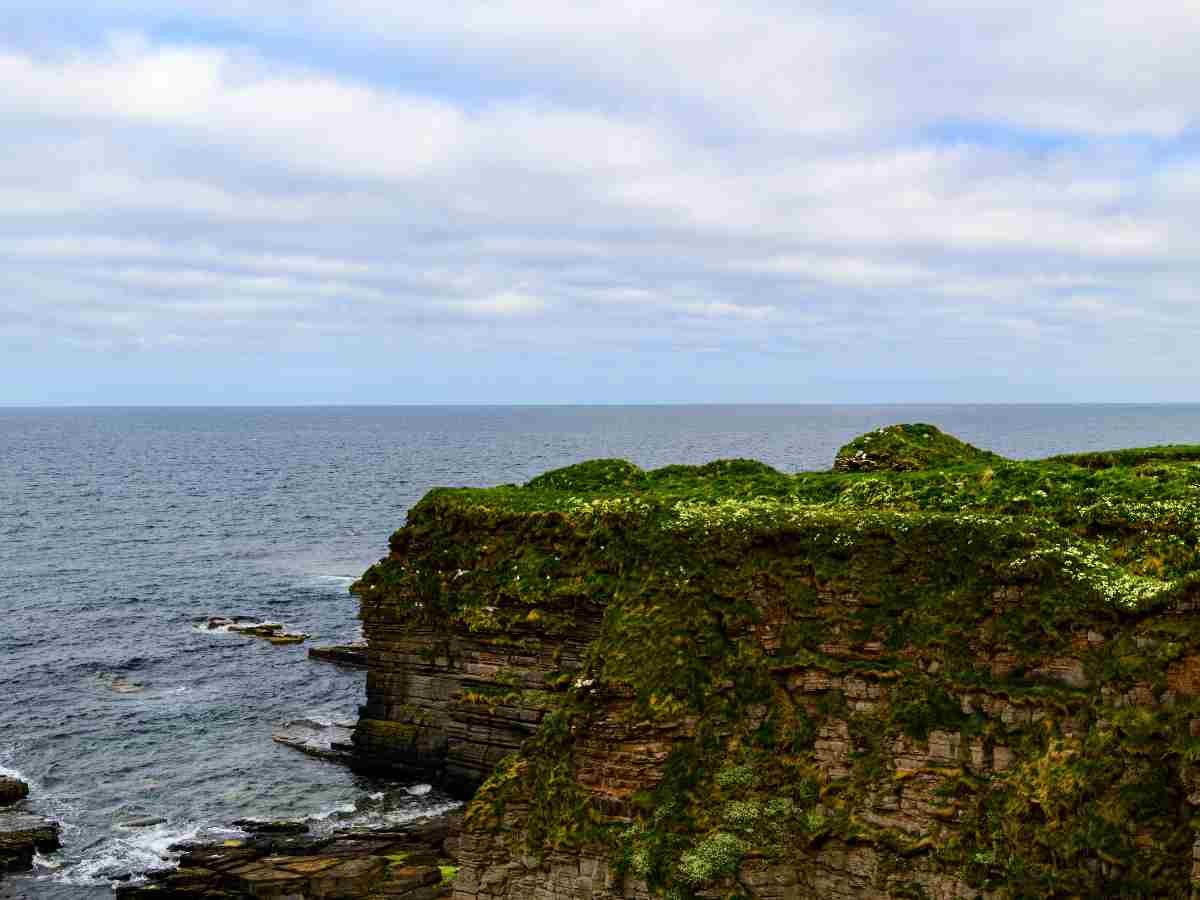
How Do You Pronounce ‘Keiss’?
The name “Keiss” is pronounced as “kice,” rhyming with “ice.” The pronunciation is straightforward, with a hard “k” sound followed by a long “i” sound, and ending with a soft “s” sound.
Keiss Village: A Timeless Tapestry of Castles, Coastline, and Caithness Charm and Why This Gem Is Worth Visiting
Keiss Village, a serene enclave in the Scottish Highlands, embodies the quintessential charm of Caithness. It is a place where history, nature, and traditional Scottish charm converge, making it a worthy destination for any traveller.
The village, with its historic castle ruins, unspoiled beaches, and picturesque surroundings, presents an idyllic setting that captures the essence of Scotland’s rugged beauty.
The Historic Grandeur of Keiss Castle
At the heart of Keiss Village’s appeal is the imposing Keiss Castle ruins. This historic edifice, standing majestically on a cliff overlooking the North Sea, weaves a tale of Scotland’s storied past. The ruins are a tangible connection to centuries of history, offering insights into the lives and times of the Scottish clans that once ruled these lands.
Currently, Keiss House, also known as ‘New Keiss Castle’, is privately owned and not open to the public. Constructed in 1755 as a replacement for the Old Keiss Castle, it led to the latter’s abandonment. This baronial mansion underwent significant alterations in 1860, directed by Col. K. Macleay and architect David Bryce. While visitors cannot access the inside of the mansion, its grandeur can be admired from the outside, offering a glimpse into its historical significance and architectural beauty.
Keiss Village and The Breathtaking Coastline of Sinclair Bay, Caithness
The Village of Keiss is also celebrated for its stunning coastal landscape. The village’s shoreline, part of the magnificent Sinclair Bay, boasts some of the most beautiful beaches in the Highlands.
Keiss Beach, in particular, is a haven of tranquility, offering visitors the chance to enjoy peaceful walks along its sandy stretches, with the soothing sounds of the sea as a constant companion. The pristine nature of this coastline makes Keiss Village a worthy destination for those seeking a serene escape in nature’s lap.
Caithness Charm: A Blend of History and Nature
In essence, Keiss Village encapsulates the charm of Caithness, a region known for its unique blend of historical richness and natural beauty.
The village’s picturesque setting, combined with its rich heritage, makes it a microcosm of what Caithness has to offer. For those drawn to the allure of the Scottish Highlands, Keiss Village is worth visiting. It’s a place that promises not just a journey through picturesque landscapes but also a deeper connection with Scotland’s vibrant history and culture.
Keiss Village is more than just a destination; it’s a portal into the heart of the Scottish Highlands, inviting visitor to immerse themselves in a world where the past and present coexist in perfect harmony.
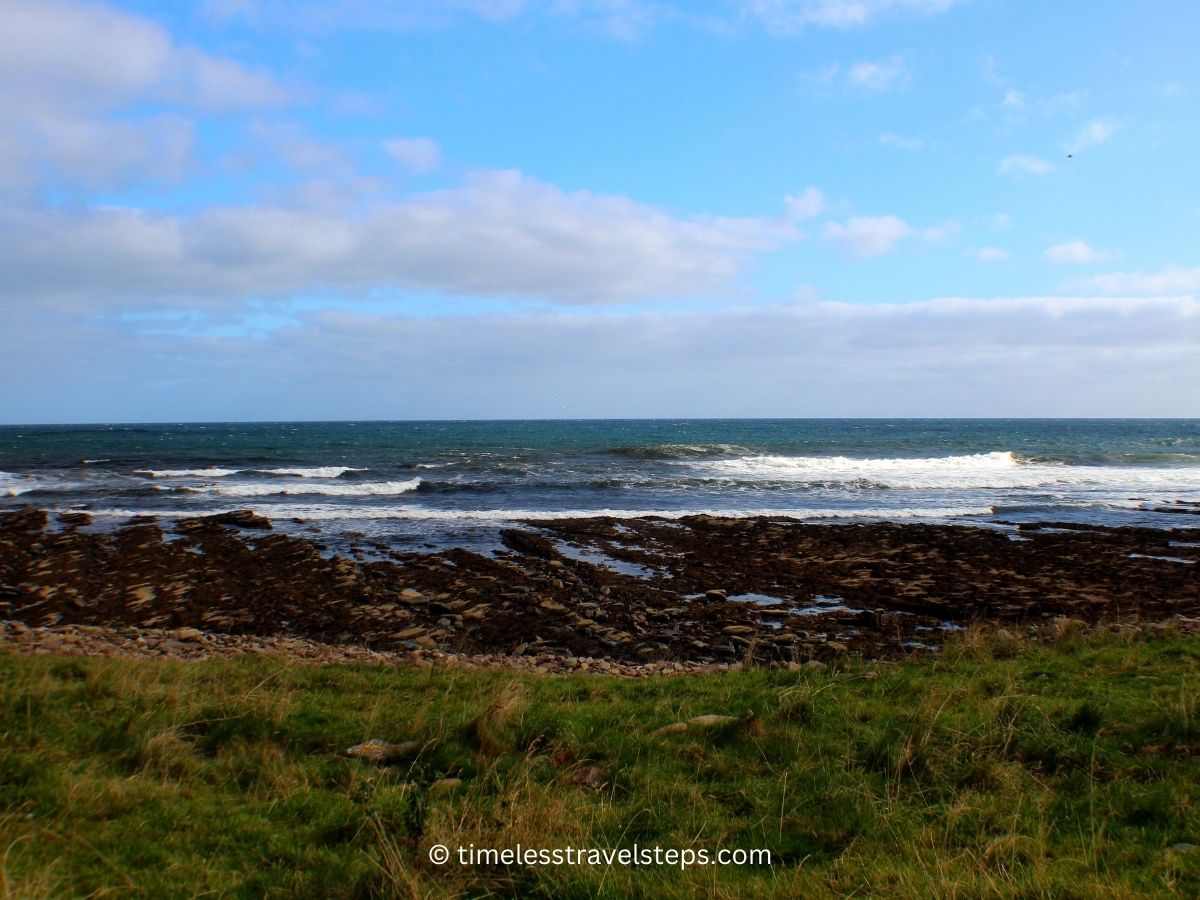
The Enigmatic Origins of Keiss Village
Delving into the history of Keiss Village has been a journey of discovery and intrigue for me. Researching its origins has revealed layers of history that are as fascinating as they are enlightening.
This section unfolds the story of Keiss. Beginning with my findings on the village’s strong connections with brochs, to its ancient Norse connections, moving through the linguistic evolution of its name, and culminating in its development as a vital fishing community. It’s a narrative that beautifully illustrates how Keiss emerged from a tapestry of cultural influences to become the serene Scottish haven it is today.
So, here’s an overview about the intriguing past that has shaped Keiss Village.
Early Settlement in Keiss
The presence of brochs in and around Keiss Village indicates that the area was inhabited during the Iron Age. Brochs, which are ancient stone structures dating back to the Iron Age, suggest that there was a civilization in the region as early as the first few centuries AD. This evidence points to a long history of human settlement in the Keiss area, extending back thousands of years. You’ll read more about brochs and the archaeological finds further below in the ‘Heritage and Archaeology’ section.
From Norse Roots to a Scottish Identity
Keiss Village, today a serene Scottish haven, has roots that stretch back to the Norsemen, the seafaring warriors and traders of old who began arriving in the Scottish Highland around the 8th century.
The very name “Keiss,” believed to be derived from the Old Norse word “ká,” meaning “jackdaw,” is a whisper from its Viking past. These Norse origins speak of a time when the North of Scotland was a tapestry of cultural exchanges and conflicts, with Keiss possibly emerging as a Norse settlement.
As centuries passed, this Norse identity gradually melded with the Scottish spirit, giving rise to the unique cultural landscape that defines Keiss today.
The Linguistic Origins of the Name ‘Keiss’
The linguistic journey of Keiss is as fascinating as its history. In Scottish Gaelic, Keiss is known as “Cèis.” While the direct translation of this name remains elusive, its Gaelic rendition is a testament to the village’s seamless integration into the Scottish narrative.
The evolution of its name, from Norse to Gaelic, mirrors the historical journey of the village itself, transitioning from a Viking stronghold to an integral part of the Scottish Highlands.
Early Historical References and the Village’s Development as a Fishing Community
Historically, Keiss has been synonymous with fishing, its lifeblood for centuries. Nestled at the northern end of Sinclair’s Bay, Keiss’s strategic location made it an ideal spot for maritime activities.
Early historical references paint a picture of a bustling fishing community, where the rhythms of daily life were dictated by the tides and seasons. The village’s development over the years has been closely tied to the sea, with generations of fishermen braving the waters of the North Sea, contributing to the rich tapestry of stories and traditions that define Keiss Village today.
As we peel back the layers of Keiss’s intriguing past, we uncover a narrative steeped in history and tradition, a story of transformation from a Norse settlement to a quintessential Scottish fishing village. In the next section, I’ll share information about the historic landmarks and enduring legacies that continue to shape the identity of Keiss Village.
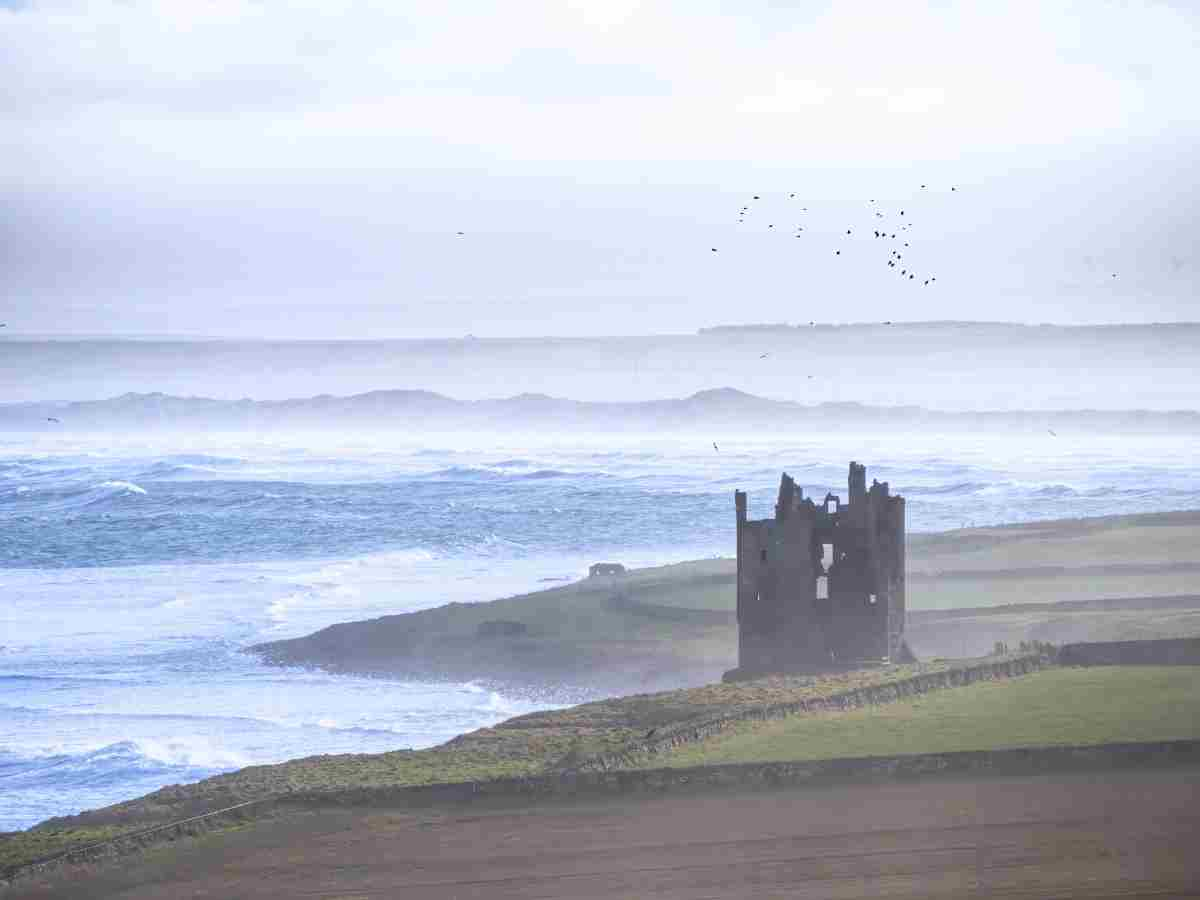
Keiss Village Through the Ages
The rich tapestry of Keiss Village’s past unveils a story that spans centuries and reflects the dynamic history of the Scottish Highlands. This journey through time reveals the enduring legacy of Keiss Castle, the strategic significance of Keiss Harbour, and the myriad tales that have woven the unique character of this village.
The following offer a synopsis about the historical milestones and architectural marvels that have shaped Keiss Village through the ages.
The Legacy of Keiss Castle
Within a stone’s throw of Keiss Village lies the legendary Keiss Castle, a structure rich in history and shrouded in mystery.
This castle, now a hauntingly captivating ruin, stands on the edge of a cliff overlooking the picturesque Sinclair Bay. Its construction dates back to the late 16th century, a period marked by turbulent Scottish history.
The architectural design of Keiss Castle, with its mix of defensive and residential features, reflects the multifaceted role it played through the centuries.
Its strategic location provided not only a defensive stronghold but also a commanding view of the North Sea, crucial for monitoring maritime activities and safeguarding the coast.
The tales and legends surrounding Keiss Castle add to its allure. Each stone and corridor of the ruin whispers stories of the past – of clans, conflicts, and the lives of those who once walked its halls. The castle’s history is intertwined with the Sinclair family, notable figures in Scottish history, adding a personal dimension to its grandeur.
The Tales and Legends Surrounding Keiss Castle
Keiss Castle, with its imposing ruins standing guard over Sinclair Bay, is not just an architectural marvel but also a repository of tales and legends that add to its mystique. These stories, passed down through generations, are a vivid tapestry of the area’s history and folklore.
One such tale tells of the Castle’s connection to the Sinclair family, prominent figures in Scottish history. The Sinclairs, known for their influence and power, are often at the center of these legends, which include tales of hidden treasures, secret passages, and midnight gatherings.
The Castle’s strategic importance, overseeing the North Sea, also led to tales of it being a watchpoint against invasions, with stories of battles and bravery adding to its storied past.
Another intriguing aspect of Keiss Castle’s legends involves the supernatural. Ghost stories and tales of unexplained phenomena have long been associated with the ruins. These include sightings of ghostly figures in the turrets at dusk and eerie sounds echoing through its now-crumbling walls.
Such tales have not only intrigued locals and visitors alike but have also made the Castle a subject of interest for historians and paranormal enthusiasts.
In essence, the tales and legends surrounding Keiss Castle are as integral to its identity as its stone and mortar. They bring the Castle to life, offering a glimpse into the past and igniting the imagination about what life might have been like during the height of its glory.
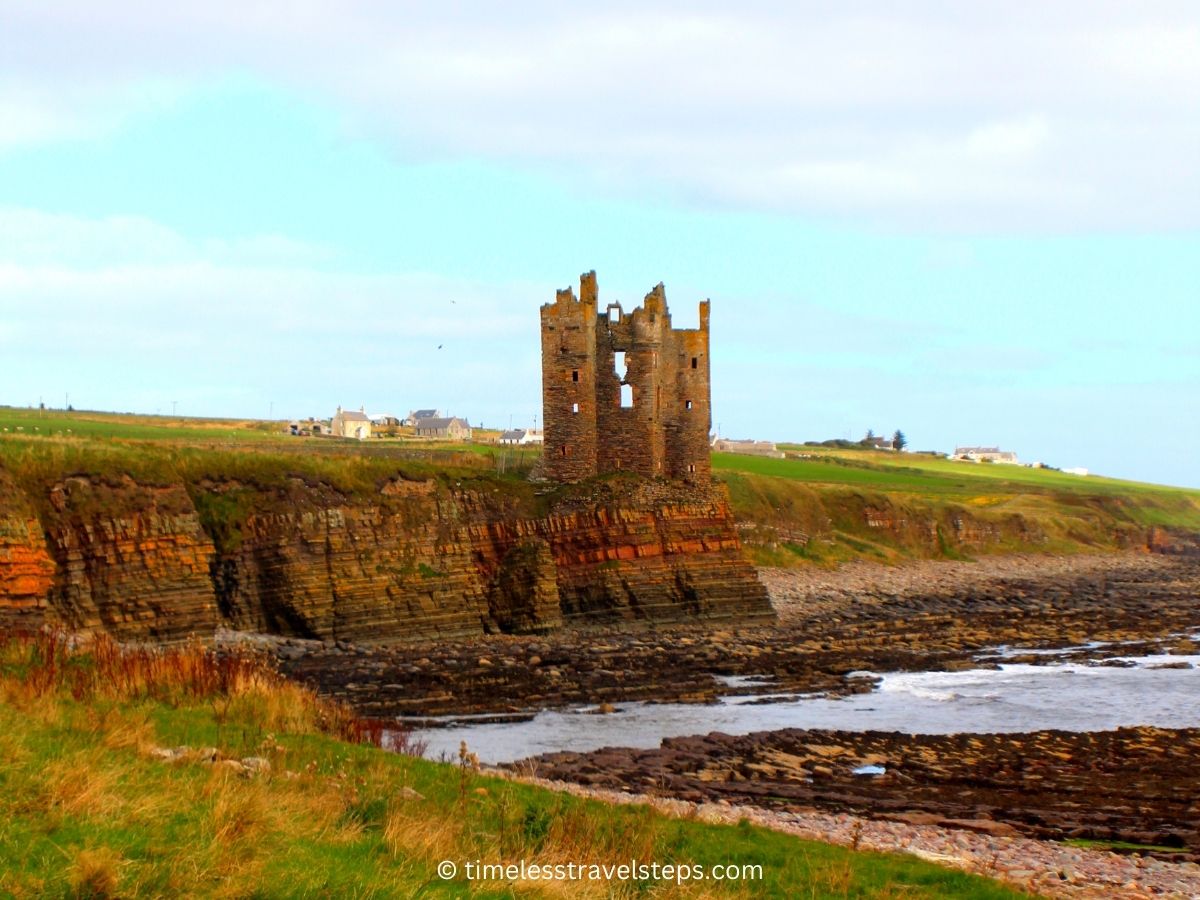
The Strategic Importance of Keiss Harbour
Keiss Harbour, constructed in 1831, is another cornerstone of the village’s maritime legacy. Its creation was not just about building a functional harbour; it was a significant achievement in engineering, designed to withstand the unpredictable moods of the North Sea.
The harbour, with its stilling basin and rubble breakwaters made from local flagstone, is a testament to the ingenuity of the era and the resilience of the Keiss community.
Historically, Keiss Harbour has been a focal point of local commerce and daily life, essential to the village’s fishing industry. The construction of the harbour, a project led by James Bremner, a native of Keiss, highlights the strong sense of community and the spirit of self-sufficiency that has characterized the village.
This harbour, beyond its practical use, stands as a symbol of the village’s deep connection to the sea and its long-standing role in the local economy.
In Keiss Village, the legacy of Keiss Castle and the strategic importance of the harbour are not just historical footnotes; they are living reminders of the village’s enduring spirit and its significant place in the tapestry of Scotland’s history.
Keiss Harbour Today
Keiss Harbour is still in use today, though its role has evolved over time. While the original purpose was to support the local fishing industry, the harbour’s current usage has diversified. Though it still serves some local fishing boats, its function has expanded to include recreational purposes.
Recreational Boating and Fishing: The harbour is now a popular spot for recreational boating and fishing, attracting locals and visitors alike. Its sheltered waters make it an ideal location for small boats to moor.
Tourism and Leisure: With the growing interest in coastal tourism, Keiss Harbour has become a point of interest for tourists exploring the Caithness coast. Visitors often come to enjoy the scenic views, the tranquility of the harbour area, and to learn about its history.
Community Use: The harbour continues to play a role in community life in Keiss, serving as a picturesque backdrop for local events and gatherings, and as a place where people can enjoy leisurely walks and the serene maritime environment.
In essence, while Keiss Harbour may no longer be the bustling fishing hub it once was, it remains an integral part of Keiss village, serving a mix of practical and recreational purposes and contributing to the area’s charm, appeal, and economy.
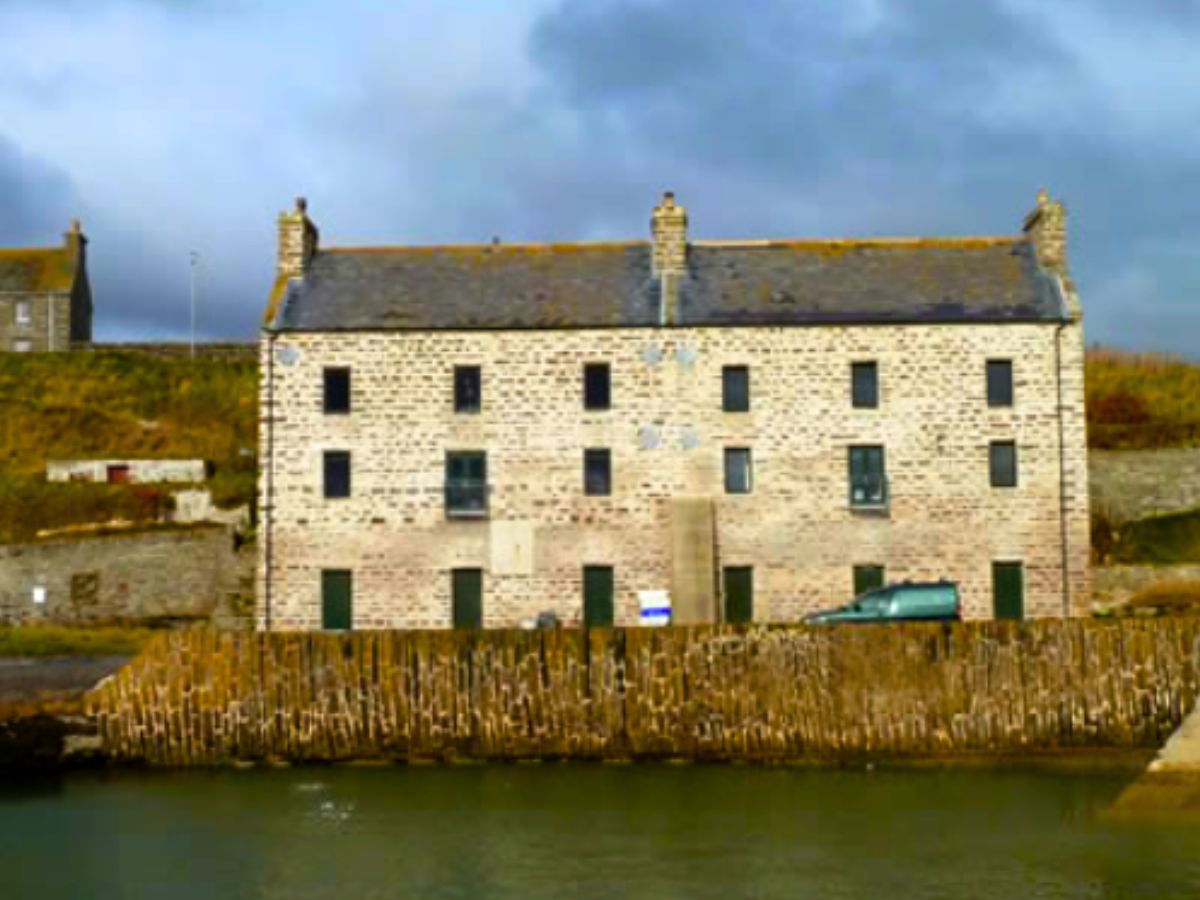
The Natural Splendour of Keiss
Keiss Village is surrounded by the breathtaking natural beauty where the rugged charm of the Scottish Highlands meets the serene allure of the coastline, creating a landscape that is both wild and inviting.
From the unspoiled sands of Keiss Beach to the dramatic vistas along the North Coast 500 route, Keiss Village offers a haven for nature lovers and adventurers alike.
The Pristine Shores of Keiss Beach
One of Keiss Village’s most enchanting features is the pristine Keiss Beach. This beautiful stretch of shoreline is a haven for those seeking tranquility and a connection with nature. The beach’s soft sands and clear waters invite leisurely strolls, peaceful picnics, and contemplative moments watching the North Sea’s waves.
For the more adventurous, it also offers opportunities for bird watching, beachcombing, and occasionally, spotting marine wildlife. Keiss Beach, with its serene ambiance and natural beauty, is a perfect representation of the slow-paced, peaceful lifestyle that the village epitomizes.
Exploring the Rugged Beauty of the North Coast
Keiss Village, nestled in the heart of the Scottish Highlands, is an ideal starting point for exploring the rugged beauty of the North Coast. The village is a part of the celebrated North Coast 500 route, Scotland’s answer to Route 66. This scenic drive meanders through some of the most spectacular landscapes Scotland has to offer, with Keiss being one of the picturesque stops along the way.
The route brings travellers through dramatic coastal scenery, rolling hills, and hidden lochs, showcasing the wild and unspoiled nature that Scotland is renowned for.
Keiss as Part of the North Coast 500 Route
As a component of the North Coast 500, Keiss offers a unique blend of historical charm and natural beauty. Visitors to the village can experience a quieter, more intimate stop on this famous journey, contrasting with the more bustling tourist spots.
The village’s location on the route makes it a convenient base for day trips to explore the surrounding areas, including nearby cliffs, caves, and coastal paths that offer breathtaking views and a sense of adventure.
The area surrounding Keiss Village is dotted with numerous natural attractions and scenic spots. From the rugged cliffs offering panoramic views of the North Sea to the tranquil countryside ideal for hiking and cycling, the region is a paradise for nature lovers, allowing for exploration and enjoying the Scottish Highlands’ raw beauty.
If you would like to embark on a tour of the North Coast 500 or of the far north of Scotland, you may find any one of these tours to be helpful:
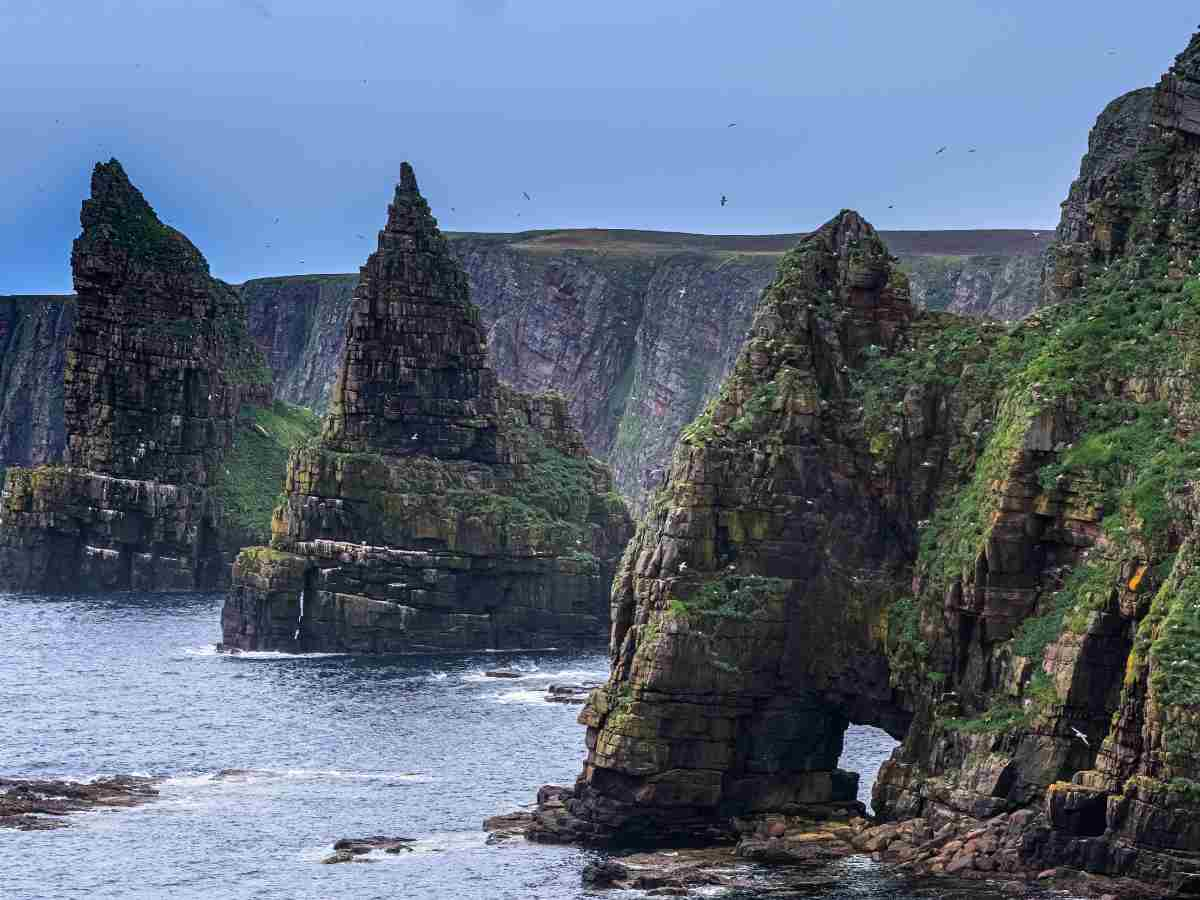
Keiss Village: A Hub for Heritage and Archaeology
As I delve deeper into the rich tapestry of Keiss Village, I discovered its pivotal role as a hub for heritage and archaeology in the Scottish Highlands.
This section unveils the fascinating world of preserved monuments and ancient brochs along with the insights they offer into Scotland’s distant past, with a particular focus on the contributions of Keiss and the Caithness Broch Centre in unraveling these historical mysteries.
Keiss Harbour Ice House
In Keiss, a preserved monument from the 19th century, the Keiss Harbour Ice House, stands near the Keiss Harbour. This historically significant ice house is an exemplary piece of early 19th-century architecture. It showcases a single chambered structure with rubble vaulting, a unique gabled ante-chamber with a central entrance, and is crowned with a turf roof.
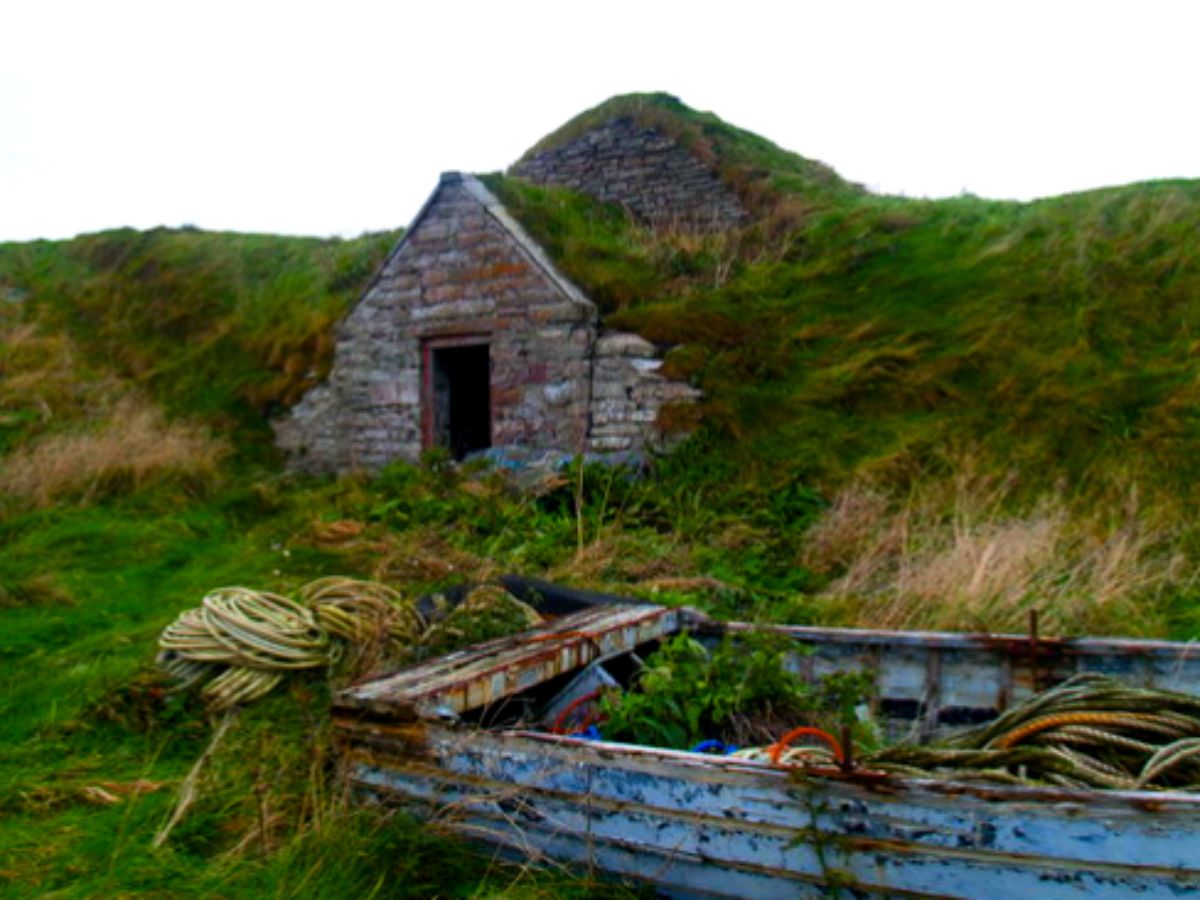
Unearthing History at the Caithness Broch Centre
Situated in the heart of Caithness, the Caithness Broch Centre is a testament to the region’s rich archaeological heritage, with Keiss Village playing a pivotal role in this historical narrative.
This center is dedicated to preserving and interpreting the ancient brochs – the towering stone structures unique to Scotland, particularly in the Highlands and Islands.
The brochs, some dating back to the Iron Age, are a window into the lives of Scotland’s early inhabitants. The Caithness Broch Centre not only showcases these impressive structures but also educates visitors about the daily lives, skills, and traditions of the people who built them, offering a tangible connection to Scotland’s distant past.
The Significance of Brochs in the Region’s History
Brochs, with their distinctive circular design, have been a subject of fascination and study for archaeologists and historians.
In Caithness and around Keiss, these structures are particularly significant due to their density and state of preservation. They illustrate the ingenuity and resourcefulness of early Scottish communities. The presence of these brochs in the region highlights the strategic importance of this area in ancient times, possibly as centers of trade, social gathering, or defense.
When you go on the Keiss Castle coastal walk, you’ll discover two significant Iron Age landmarks, Keiss Broch and Whitegate Broch. These landmarks are remarkable examples of drystone hollow-walled structures, showcasing the sophisticated defensive techniques of that era.
What is a broch?
A broch is a type of Iron Age structure unique to Scotland, characterized by its drystone construction and hollow-walled design.
Brochs belong to the classification “complex Atlantic Roundhouse” and are found mainly in the northern and western parts of Scotland. They date back to around 100 BC to 100 AD.
Brochs have a unique architectural style. They typically feature a double-walled construction with a narrow entrance and no windows. The walls of a broch often form a circle and can be up to 13 feet (4 meters) thick. Inside, the walls are usually hollow and contain a series of galleries and staircases between the inner and outer walls. The purpose of these galleries is still a subject of debate among archaeologists.
The primary function of brochs remains somewhat unclear, but they were likely used as habitations, perhaps with a defensive purpose due to their formidable appearance and strategic locations. Some theories suggest they were used as status symbols to demonstrate wealth and power.
Brochs are an important part of Scotland’s archaeological heritage and provide significant insights into the life and society of the Iron Age inhabitants of the region.
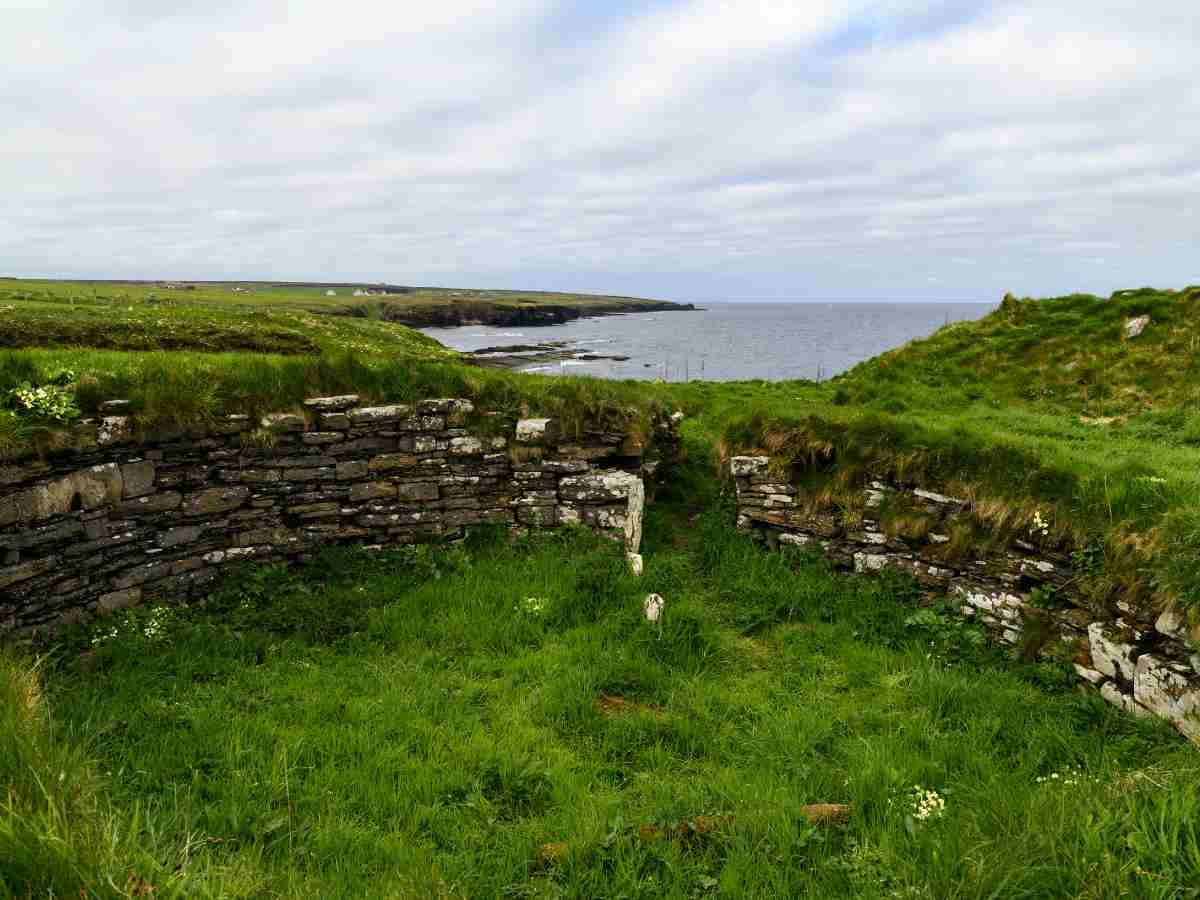
How Keiss Contributes to Understanding Scotland’s Archaeological Past
Keiss Village, and its landscape is dotted with brochs and other ancient structures. Nestled near some of these remarkable brochs, the village is not just a scenic locale but also a key to unlocking the secrets of Scotland’s archaeological past.
The village’s proximity to these ancient structures offers an invaluable insight into the broader historical landscape of the region. Through ongoing archaeological research and preservation efforts, Keiss contributes significantly to the understanding of Scotland’s heritage.
Visitors to Keiss can immerse themselves in this rich history, gaining a deeper appreciation of the land and its ancestors. In this hub of heritage and archaeology, Keiss Village stands as a guardian of the past, inviting explorers, history enthusiasts, and the curious to delve into a world that once was, and to discover the stories etched in stone and earth.
For those interested in getting involved, the official website of the Broch Project provides comprehensive information on their initiative to build the first broch in Caithness, Scotland, in two millennia. This ambitious project aims to recreate these ancient structures and offers insights into the reasons behind this significant undertaking.
Keiss Village as a Base for Highland Exploration
Keiss Village, with its quaint charm and strategic location, serves as an ideal gateway for those looking to explore the Scottish Highlands.
It stands as a perfect base for travellers who wish to uncover the hidden gems of Caithness, offering convenient access to a myriad of historic sites, natural wonders, and unique cultural experiences.
Here are some potential adventures that await when you choose Keiss as your starting point for exploring the majestic Highlands.
Old Keiss Castle Coastal Walk
Visiting Keiss Village offers a unique opportunity to embark on the Keiss Castle coastal walk, an experience often highlighted as a must-do in the area. This scenic route takes you along rugged coastlines to the haunting ruins of Keiss Castle.
Perched dramatically on the edge of cliffs, the castle presents a striking image of historical resilience against the harsh coastal elements. This walk not only offers breathtaking views of the North Sea but also a vivid glimpse into Scotland’s rich past. You have the unique opportunity to encounter ancient brochs, remnants of Scotland’s distant past, scattered across the landscape. These Iron Age structures add a layer of historical intrigue to the journey, making the walk a perfect blend of natural beauty and archaeological wonder. An unforgettable journey for anyone exploring the region.
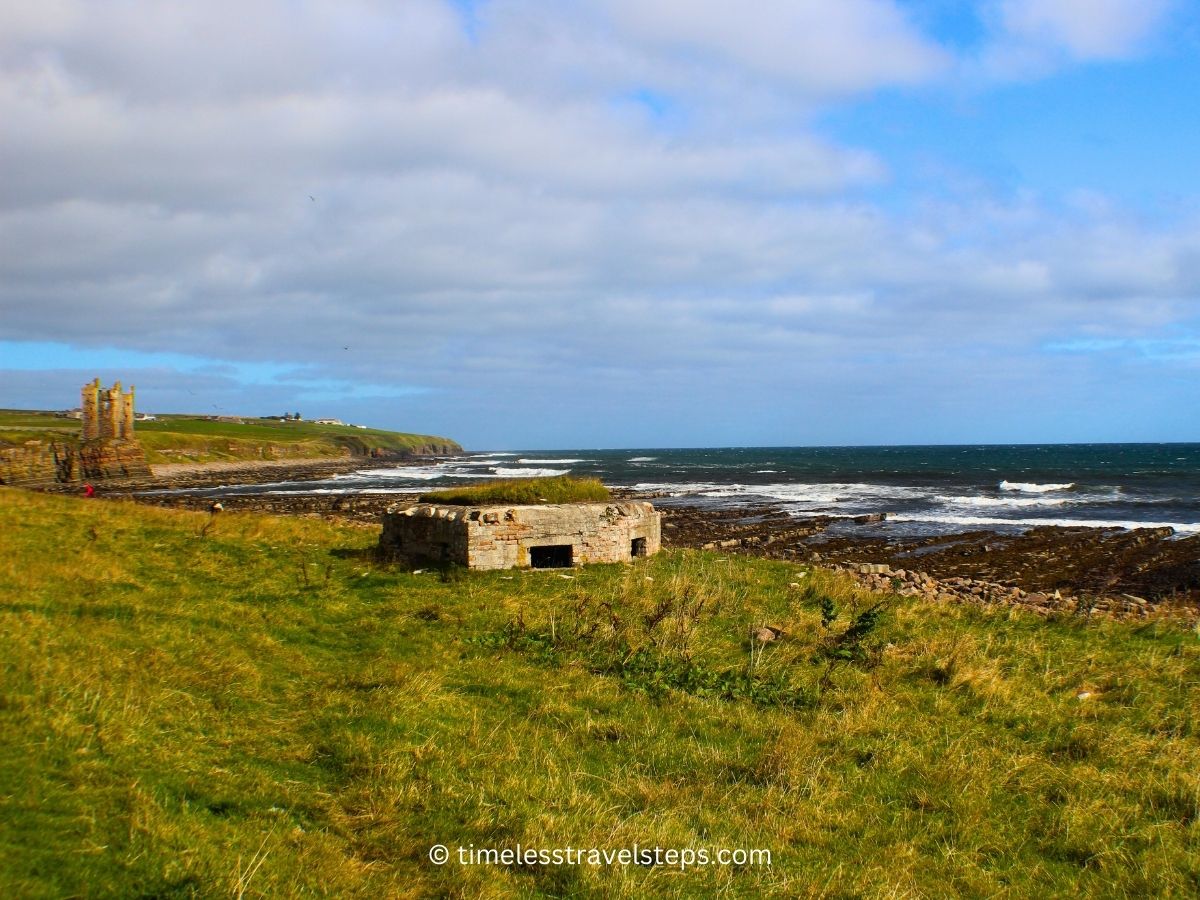
Keiss Village’s Proximity to Major Attractions
Ideally situated for exploring the Scottish Highlands. the village is approximately 11 kilometers (about 6.6 miles) from the mystical ruins of Sinclair and Girnigoe Castles, offering easy access to these historic sites.
The dramatic cliffs of Duncansby Head, known for their stunning views, are just about 13 kilometers (8 miles) away, making Keiss an excellent starting point for adventurers.
Day Trips and Excursions from Keiss
Keiss Village is also strategically placed for day trips to discover the hidden gems of Caithness. The town of Wick, with its rich history and cultural offerings, is only about 11 kilometers (6.8 miles) away.
For those seeking breathtaking coastal views, John O’Groats is a mere 12 kilometers (7.5 miles) from Keiss and serves as a gateway to the Orkney Islands.
Additionally, the village’s location allows for easy exploration of nearby wildlife reserves, showcasing the natural beauty of the Scottish countryside.
Ways to Get to Keiss Village, Caithness
How to Get to Keiss Village By Car (Self-Drive)
Exploring the Scottish Highlands by car, particularly the untamed beauty of places like Keiss Village, offers an unparalleled experience.
Self-driving is not only the best way to access Keiss Village but also provides the flexibility to discover the hidden charms of the celebrated North Coast 500 (NC500) route, of which Keiss is a conveniently located part. The village serves as an ideal stop or base for those traversing this iconic route.
The drive towards Keiss, particularly from Wick via the A99, is both straightforward and scenic. If you’re in need of a car, you could hire one here.
How to Get to Keiss Village by Bus or Train
While self-driving is optimal, public transport is also a viable option for reaching Keiss Village, though it requires more planning.
Train: The nearest major train station is in Wick, with connections from Inverness, which in turn is linked to Edinburgh, Glasgow , and other Scottish cities. The train journey offers a unique opportunity to witness the breathtaking landscapes of the Highlands.
Bus and Taxi: From Wick, you can continue to Keiss by bus or taxi. Regular bus services link Wick to Keiss, with centrally located drop-off points in the village. For a more direct journey, taxis are available at Wick train station and offer a comfortable and convenient option, especially for those with luggage or preferring a less public mode of travel.
Choosing to travel by car gives you the freedom to explore the NC500 and its off-the-beaten-path destinations like Keiss Village at your own pace, turning the journey itself into an unforgettable part of your Highland adventure.
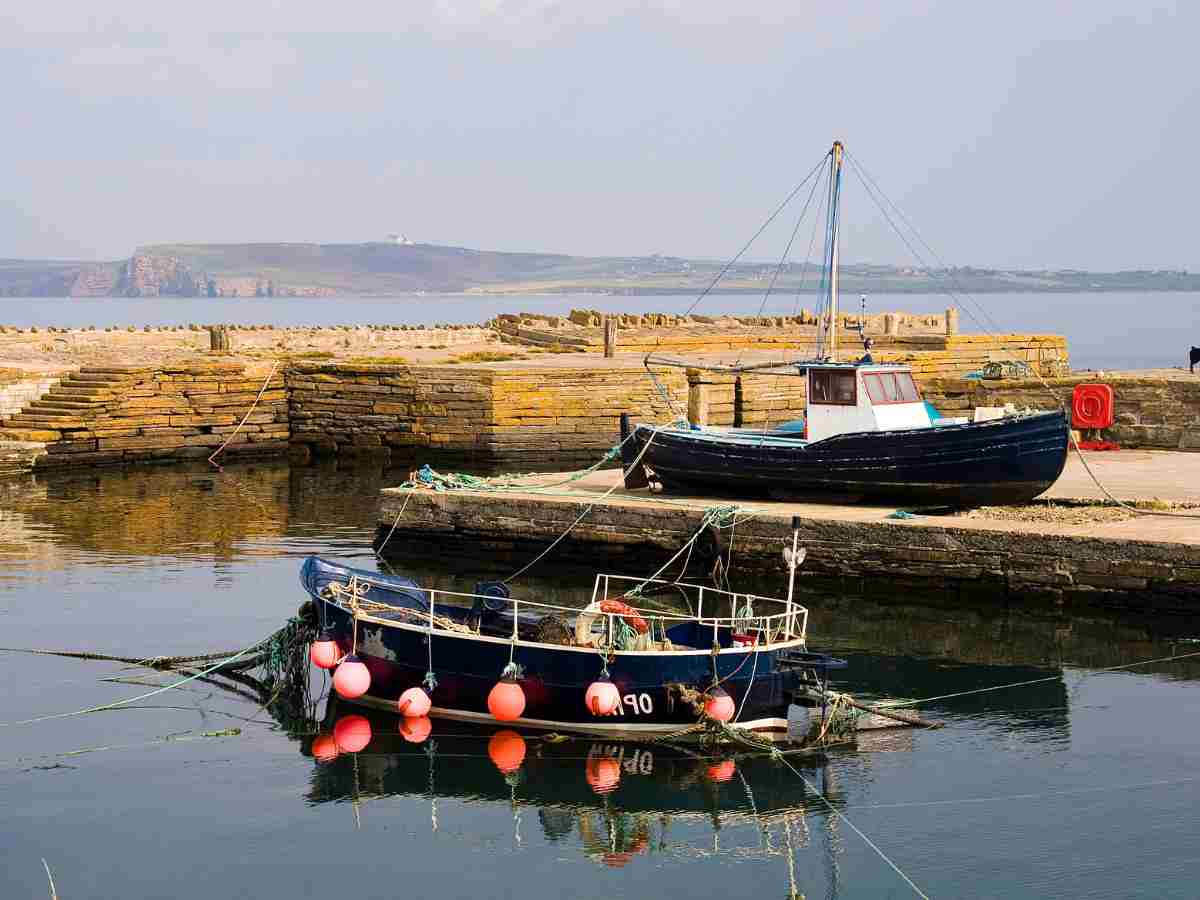
Where to Stay in Keiss Village, Caithness, Scotland
In Keiss Village, there are several accommodation options that cater to those seeking a tranquil escape in the Scottish Highlands. Here are some suggestions:
Sinclair Bay Lodges: For a more intimate and cozy stay, the Sinclair Bay Lodges offer a charming option. Located in Keiss, these lodges provide comfortable accommodations with easy access to local attractions, including the beach and the historic Keiss Castle.
Local B&Bs and Guesthouses: Keiss and the surrounding area have a selection of bed and breakfasts and guesthouses. These often family-run establishments provide a warm, homely atmosphere and are a great way to experience Scottish hospitality. Peruse options here.
Nearby Wick Accommodations: If you prefer staying in a slightly larger town, Wick, which is only a short drive from Keiss, offers a wider range of accommodation options, from hotels to additional B&Bs and rental cottages.
Camping and Caravanning: For those who love the outdoors, there are camping and caravanning sites in the vicinity of Keiss. This option allows you to be close to nature and enjoy the scenic beauty of the Caithness coast. Check here.
Each of these options provides a different way to experience the tranquility and beauty of Keiss Village and its surroundings, catering to a range of preferences and needs.
Where to Eat in Keiss Village, Caithness
Keiss Village, known for its quaint and serene atmosphere, offers a limited but charming selection of dining options. Reflective of its small size, the village doesn’t boast a wide array of eateries, but what it lacks in quantity, it compensates with quality and a warm, inviting ambiance.
A standout choice is the Village Inn, a cozy establishment celebrated for its traditional British fare, excellent value, and genuinely welcoming environment. This modest selection of dining places in Keiss Village provides a delightful opportunity to experience local hospitality and cuisine in a more intimate and authentic setting.
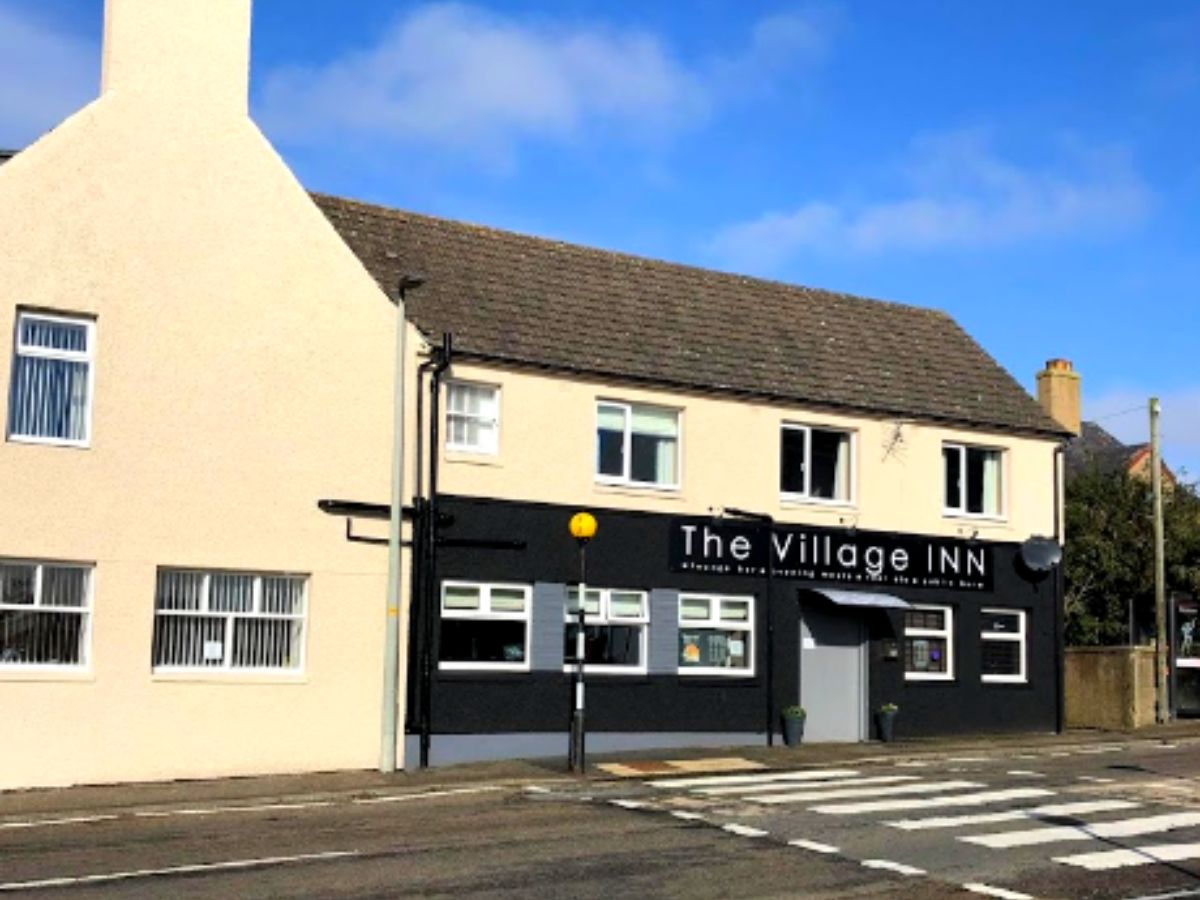
FAQs
Yes, you can visit Keiss Castle, but it’s important to note that the castle is fenced off for safety reasons. While direct access to the structure itself is restricted, visitors can still get quite close, offering a good view of the ruins and the opportunity to appreciate the historical significance of the site, as well as the scenic beauty of its surrounding landscape and the North Sea.
To reach Keiss Castle from Keiss Village, start your journey at Keiss Harbour. From the harbour, the castle is a short and scenic walk away. This walk will take you along the beautiful coastline, providing picturesque views of Sinclair Bay. The route is relatively straightforward, 1.9 kilometers and takes about 30 minutes. The trail is an easy walk for most visitors, offering an enjoyable way to access the historic ruins of Keiss Castle.
In essence…
Keiss Village, with its blend of historical intrigue, natural beauty, and warm community spirit, is more than just a destination; it’s an experience. This hidden gem in the Scottish Highlands invites you to step away from the well-trodden path and immerse yourself in a place where history and nature intertwine seamlessly.
Whether you’re seeking a peaceful retreat, a historical adventure, or a base for exploring the wider wonders of the Highlands, Keiss Village awaits with its hospitality.
Happy and Safe Travels Always, Wherever Travel Takes You, xx
Before you go, take a look at some of my in-depth articles about Scotland. These may be helpful guides to your trip planning.
Stay Connected with Timeless Travel Steps for the latest in our Travel News
